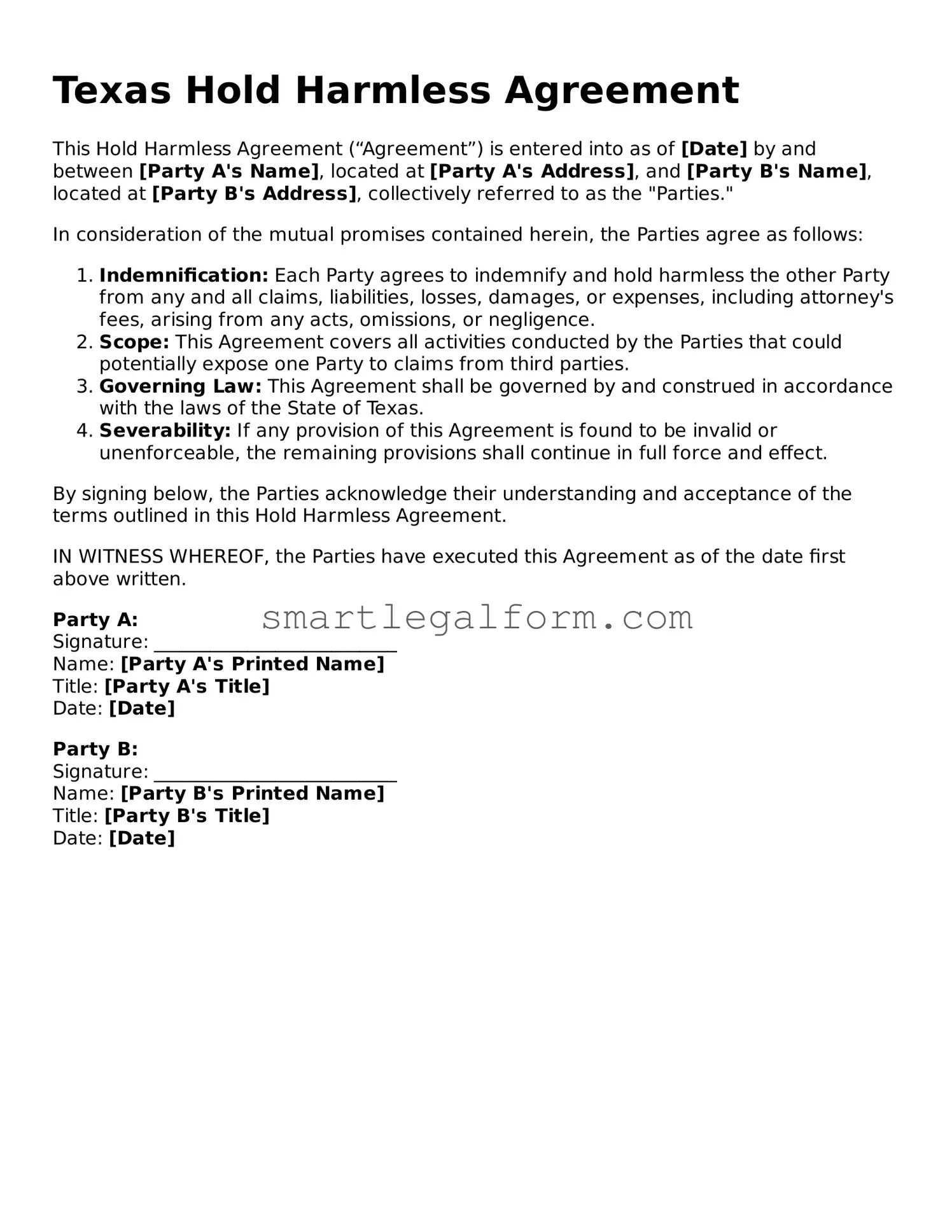Texas Hold Harmless Agreement
This Hold Harmless Agreement (“Agreement”) is entered into as of [Date] by and between [Party A's Name], located at [Party A's Address], and [Party B's Name], located at [Party B's Address], collectively referred to as the "Parties."
In consideration of the mutual promises contained herein, the Parties agree as follows:
- Indemnification: Each Party agrees to indemnify and hold harmless the other Party from any and all claims, liabilities, losses, damages, or expenses, including attorney's fees, arising from any acts, omissions, or negligence.
- Scope: This Agreement covers all activities conducted by the Parties that could potentially expose one Party to claims from third parties.
- Governing Law: This Agreement shall be governed by and construed in accordance with the laws of the State of Texas.
- Severability: If any provision of this Agreement is found to be invalid or unenforceable, the remaining provisions shall continue in full force and effect.
By signing below, the Parties acknowledge their understanding and acceptance of the terms outlined in this Hold Harmless Agreement.
IN WITNESS WHEREOF, the Parties have executed this Agreement as of the date first above written.
Party A:
Signature: __________________________
Name: [Party A's Printed Name]
Title: [Party A's Title]
Date: [Date]
Party B:
Signature: __________________________
Name: [Party B's Printed Name]
Title: [Party B's Title]
Date: [Date]
